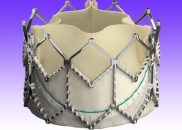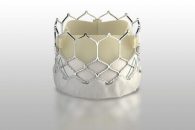TAVR as a Minimalist Procedure. Presenters: Dr. Paulo Caramori, Brasil. Dr. Luis Gutierrez Jaikel. This video, sponsored and funded by Medtronic, was filmed during SOLACI-CACI 2017 Congress, at Hilton Buenos Aires Hotel (in Argentina). Do you want to take a look at all other SOLACI-CACI 2017 Congress Medtronic cases? Watch them We are interested in your opinion.…
Development of New Valves Lowers Need for Pacemaker
Courtesy of Dr. Carlos Fava. While the benefits of TAVR are well-known, the need for a permanent pacemaker after implantation is still an issue to solve, even though new valves have reduced it. This study enrolled 175 patients who underwent TAVR with an ACURATE neo TF valve. In this population, 58% of patients were women and the…
The Perks of Conscious Sedation in TAVR
The main advantage of transcatheter aortic valve replacement (TAVR) has always been its less invasive nature, compared against surgery. Many of the advances in this technique revolve around making it even less invasive, increasing the gap between the two. The kind of anesthesia has been one of these many advances. There are several reports (in general from…
TAVR in Pure Aortic Regurgitation: New Devices, New Outcomes
Pure aortic regurgitation has historically been considered a contraindication for transcatheter aortic valve replacement (TAVR) due to the absence of calcification and subsequent device anchoring problems it poses. Initial reports on first-generation self-expanding valves for the treatment of pure regurgitation were somewhat discouraging, but devices evolved, adding repositioning capacity, different external skirts (pericardial, PET, urethane,…
Cardiac Damage: Should we start to assess it?
Courtesy of Dr. Carlos Fava. The current recommendation for aortic valve replacement is based on stenosis severity based on valvular criteria (mean transvalvular gradient, peak aortic velocity and valve index area) and the presence of symptoms, in addition to comorbidities, mainly for risk stratification. However, ventricular damage and/or its effect on cardiovascular hemodynamics are not regarded…
Failing Surgical Bioprosthesis: A Challenge on the Rise
Courtesy of Dr. Carlos Fava. The gold standard for failing aortic bioprosthesis has traditionally been surgery. However, since the first valve in valve (TAV-in-SAV) report in 2007, by Wenaweser, transcatheter valve implantation has emerged as a valid alternative. Even so, at present there is not enough scientific evidence in this regard. The present study analyzed…
TAVR in Patients with Pure vs. Mixed Aortic Stenosis: Benefits and Evolution
Courtesy of Dr. Carlos Fava. Transcatheter aortic valve replacement (TAVR) has been proven to reduce mortality and improve the quality of life of patients with pure severe aortic stenosis (PAS). However, there is a significant number of patients who experience mixed aortic stenosis associated with moderate/severe aortic regurgitation (MAS). These subjects were excluded from the PARTNER…
Small Aortic Annulus: What Valve Should We choose?
Courtesy of Dr. Carlos Fava Surgical aortic valve replacement in a small annulus (<400 mm2) is associated with shorter duration, higher valve deterioration and patient prosthesis mismatch (PPM). They present a negative impact as regards duration and evolution. TAVR might be an option, with superior hemodynamic outcome and lower PPM. Read also: “Patients and Healthcare…
New Self-Expanding Valve Measures Up Against Sapien 3
Both balloon-expandable and self-expanding valves have been tested in randomized studies, with excellent outcomes. While both technologies have advantages, the chance to reposition or re-steer the sheath is only offered by self-expanding valves, which also adjust better to patient anatomy. The CHOICE trial, published in 2014 in JAMA, was one of the few randomized studies…
Lung Disease and TAVR: Beneficial for a Reduced Group of Patients
Chronic Lung Disease often affects patients with severe aortic stenosis undergoing transcatheter aortic valve replacement (TAVR) or surgery. In fact, this is why patients with lung disease are often deemed inoperable and prescribed TAVR. This is the first time the benefit of TAVR has been assessed in this group of patients, for symptoms of these conditions can…
Here you will find the last news about TAVR
1) New Study Confirms TAVR Durability at 5 Years The ADVANCE study was designed to evaluate the safety and effectiveness of transcatheter aortic valve replacement (TAVR) with self-expanding prosthesis CoreValve in “real world” patients with symptomatic, severe aortic stenosis at high surgical risk. Read the conclusions of this study 2) An Important Study Shows That Renal Function Must Be Cared for in…










